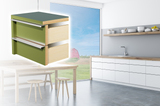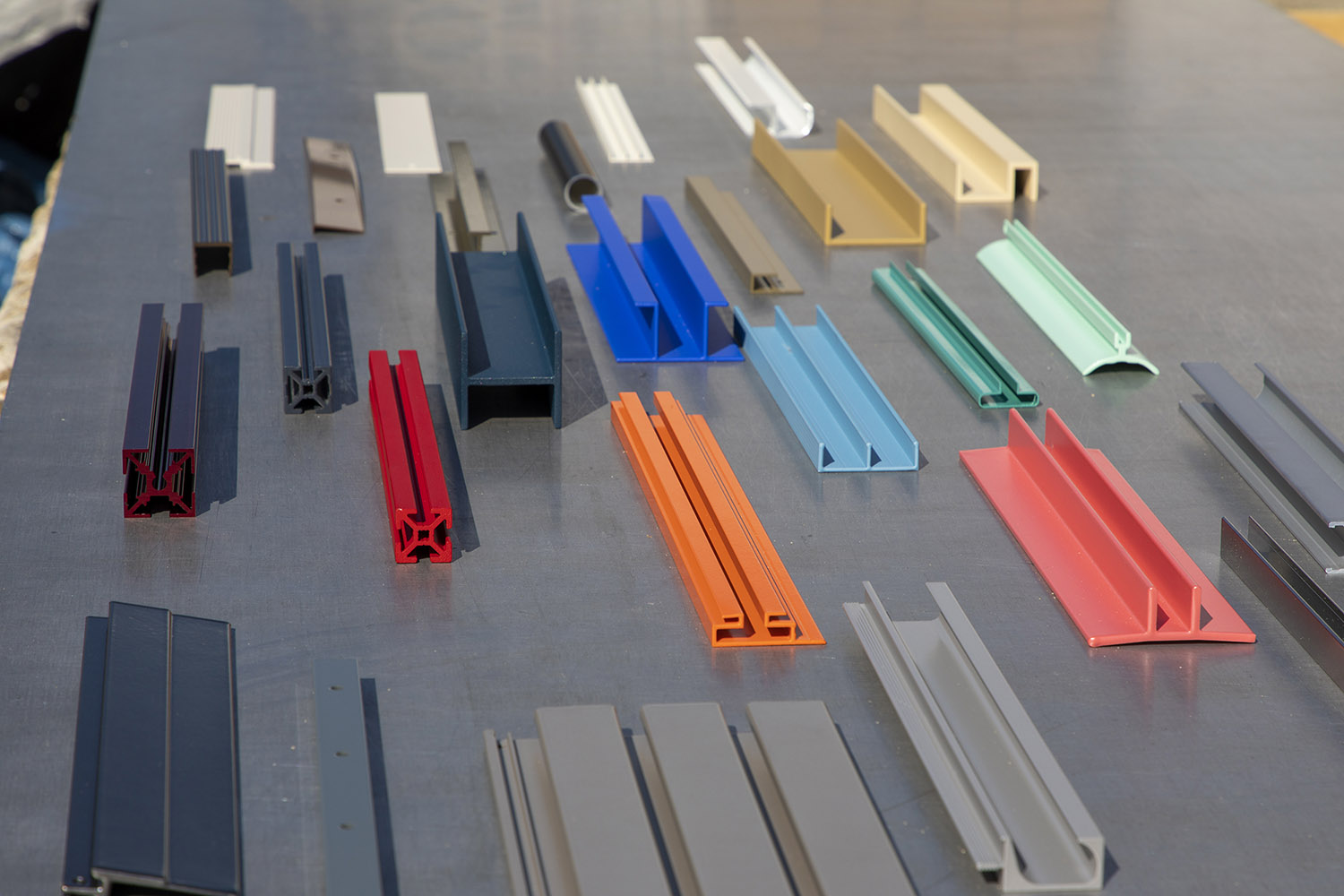Steel vs. Aluminum Solar Panel Racking

Whether they’re high up on a roof or suspended above the ground in the backyard, solar panels are everywhere. But no matter where they are, they rarely sit flush with the surface. Instead, they’re typically fixed to solar panel racks.
In most cases, these racks are made of steel or aluminum. And, as you might have guessed, choosing one or the other isn’t random—there are advantages and drawbacks to each material. To help you decide, let’s look at some of the differences between steel and aluminum solar panel racking.
Common Aluminum Profiles for Solar Panel Mounting
Before we dive into the comparison, it’s essential to understand what solar panel mounting and racking systems look like. With that in mind, we’ll quickly touch on a handful of common extrusions for solar mounting solutions. Note that the word “extrusion” refers to the shape and pattern of the aluminum rail.
Several extrusions work well for racking solar panels, including:
- Square tubes – Square tubes provide a flat, sturdy surface that remains lightweight due to the hollow interior. Alternatively, slot press fit extrusions combine the hollow channel of a square tube with the convenience of an external rail. Learn more about the differences between square and round tubing.
- T-slot extrusions – The T-slot extrusion is another popular aluminium profile for solar panel mounting. The T-shaped slot makes it easy to slide pieces together and then render micro-adjustments as you go. A simple T-track gives you a single track for flat installations, while a T-slot quad track has four options and is ideal for more complex setups.
These extrusions—and many others—can be made from steel or aluminum.
Aluminum vs. Steel for Your Solar Project
So, aluminum and steel are both viable options for your upcoming solar panel project. But surely one must be better than the other?
Ultimately, it depends on your situation and your needs. There are four main factors to consider.
Strength
Of course, when it comes to mounting solar panels, strength is one of the most vital considerations. The racking you choose needs to support the weight of your solar panels—and then some.
Why? Well, solar panels are expensive; the last thing you want is for them to come crashing down. A strong mounting system keeps your solar panels (and any snow or debris they collect) from collapsing. This strength is essential during storms and high winds.
To that end, steel racking may appear to be the better choice. After all, steel is a stronger material than aluminum. However, advancements in aluminum technology have made the metal stronger than ever—without eliminating other benefits that we’ll touch on below.
What’s more, even though aluminum may not be quite as strong as steel, it boasts a high strength-to-weight ratio. In practice, this means that aluminum can withstand significant stress before it breaks.
Weight
Steel may be slightly stronger than aluminum, but it’s also much heavier. Steel has a density of 7.8g/cm², while aluminum has a density of 2.7g/cm². In other words, steel is more than three times heavier than aluminum!
Steel’s extra weight has its uses in certain construction scenarios, but for mounting solar panels, lightweight aluminum is usually best—especially when installing panels on the roof.
Durability and Corrosion Resistance
Solar panels are built to last—and the racking on which they’re mounted should be, too. Steel and tempered aluminum are similarly durable materials but they resist corrosion differently.
Over time, when steel is exposed to the elements, it can rust. When steel rusts, it becomes less durable (not to mention less attractive).
If you’re committed to using steel, stainless steel is a rust-resistant option. However, it’s even heavier—and more expensive—than standard steel. As such, it’s not an ideal material for solar panel racking.
On the other hand, aluminum doesn’t rust, but unprotected varieties are prone to corrosion. With that said, avoiding corrosion is simple, as you can opt for affordable protective coverings like:
- Powder coating
- Anodization
- Paint
It’s also important to note that while corroded aluminum may not look the best, it poses little structural risk.
Price
Last but certainly not least, there’s the price difference. As a general rule, aluminum costs more than steel. However, you get what you pay for.
As mentioned, aluminum is strong yet lightweight and resistant to corrosion when properly treated. For long-term installations or mobile situations, it’s well worth the extra cost.
Aluminum may also be cheaper than steel if you’re transporting the material over long distances. Because aluminum is lighter, it costs less to move.
Applications
So, when should you use steel vs. aluminum? It depends on where you’re placing your solar panels.
For rooftop solar panels, aluminum is the clear winner. Weight is the number one consideration for roof-mounted solutions, and aluminum is far and away the most lightweight choice. The same logic applies if you’re adding a solar panel racking system to an RV or camper van.
For ground-mounted solar panels, the material you choose is less of a concern. Aluminum and steel will both support the weight of the solar panels, although using aluminum makes it easier for you to move your setup in the future.
Overall, unless you’re mounting solar panels in a location where severe weather is common, aluminum is the ideal choice.
Rack Your Solar Panels with Orange Aluminum
Regardless of where you plan to mount your solar panels, our expert team can help. At Orange Aluminum, we have a range of solar panel mounting solutions and the knowledge to go with them.
Have something more specific in mind? We offer customization services for every plan and project. Contact us today to find out more—we’d love to help you make the switch to sustainable solar energy.
Sources:
IOP Science. Failure predictions in warm forming of 7075-T6 aluminum structural parts. https://iopscience.iop.org/article/10.1088/1757-899X/418/1/012024
MatWeb. Steels, General Properties. https://www.matweb.com/search/datasheet.aspx?bassnum=MS0001
MatWeb. Aluminum, Al. https://www.matweb.com/search/datasheet.aspx?bassnum=AMEAL00



